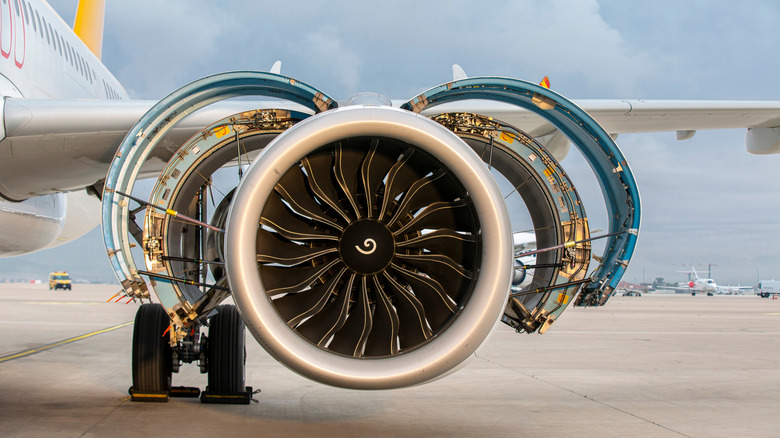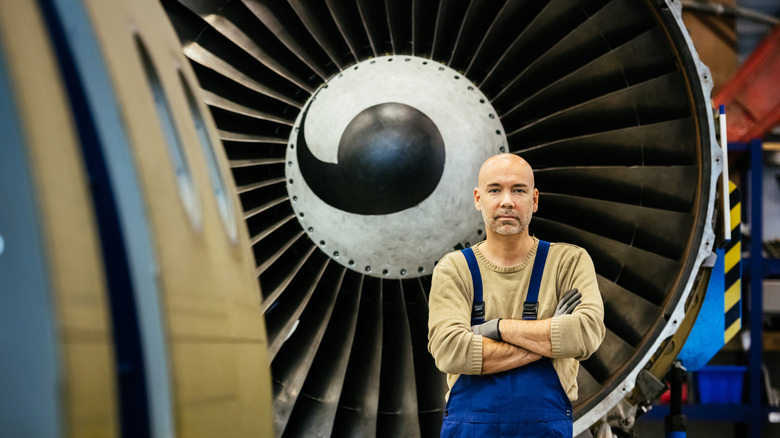
If you've ever had a chance to look closely at a commercial jetliner, you might've noticed a spiral painted on the center of its engine fan. It might seem like a decorative choice, but the little swirl has a big part to play, just like the random-looking numbers on the runway. Basically, it's a vital safety feature, especially for the people working just a few feet from those engines on the tarmac. Without it, spotting a running engine in a busy airport could be much harder, increasing the risk of accidents.
Jet engine blades spin incredibly fast -- sometimes between 2,200 and 4,500 revolutions per minute. As a result, they can appear invisible when running. That's where the spiral comes in. Once the engine starts, the white spiral turns into a fast-moving blur, giving a heads-up to the people working nearby that something powerful and dangerous is in motion. Ground crew wearing hearing protection often can't hear engines ramping up. So, in loud, chaotic environments like airports, a spinning spiral might be the only sign that warns them to stay back.
Read more: 10 Largest Air Forces In The World, Ranked By Military Aircraft Numbers
It's All About Visibility And Safety

The spiral is usually painted directly onto the spinner cone -- the central hub of the jet engine intake. It's placed there to catch the eye, creating a bright, swirling warning when the engine is running. This small design helps turn a nearly invisible danger into a visual alert. Without it, a crew member walking nearby might not realize the engine is active until it's too late. In busy airport environments, where noise and distractions are constant, this visual cue is often the only reliable way of warning ground workers.
The style might vary, with some spirals being thick and coiled, while others look like horseshoes, commas, or apostrophes. But, they grab your attention instantly. With engines capable of sucking in objects from several feet away, especially at full throttle, any added visibility makes a critical difference. On a Boeing 737, for example, the danger zone can stretch nine feet at idle and up to fourteen feet at full power, putting anyone too close at serious risk. When such a powerful machine is at work, the spiral design helps issue a clear warning, making sure everyone knows exactly when the engine is spinning.
Could These Spirals Scare Off Birds Too?

While spirals mainly offer protection to humans, there's an ongoing debate about whether they also help prevent bird strikes. Some birds might mistake a jet engine's dark center for shelter. But when that center has a flickering spiral spinning at high speed, it becomes a lot less inviting. A Japanese airline, ANA, once experimented with spiral-like eye designs on its planes and saw a notable drop in bird strikes with airplane engines.
Bird strikes are serious business, and they cost airlines hundreds of millions each year and can even take down an aircraft. Though Boeing has questioned the effectiveness of spirals as bird deterrents, engine makers like Rolls-Royce suggest they may help. Whether it's keeping a plane safe or scaring off birds, these little paint jobs do a lot more than you'd think. ANA alone saved nearly $200,000 annually after adopting spirals -- and if it helps prevent just one accident, it's worth every brushstroke.
Want the latest in tech and auto trends? Subscribe to our free newsletter for the latest headlines, expert guides, and how-to tips, one email at a time.
Read the original article on SlashGear.











